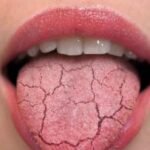As the temperatures rise, the risk of heat-related illnesses increases significantly. Among these, heat stroke is one of the most severe conditions, requiring prompt and effective first aid to prevent serious complications or even death. In this blog, we’ll cover the immediate steps you should take to treat heat stroke.

Understanding Heat Stroke
Heat stroke occurs when the body’s temperature regulation system fails due to prolonged exposure to high temperatures, often exacerbated by high humidity. This leads to a dangerously high core body temperature, typically 104°F (40°C) or higher. If not treated quickly, heat stroke can cause damage to vital organs and the brain.
Recognizing the Symptoms
The first step in treating heat stroke is recognizing its symptoms. Key signs to watch for include:
- High body temperature (104°F or higher)
- Altered mental state or behavior (confusion, agitation, slurred speech)
- Hot, dry skin or profuse sweating
- Nausea and vomiting
- Flushed skin
- Rapid, shallow breathing
- Racing heart rate
- Headache
- Unconsciousness
If someone is exhibiting these symptoms, it’s crucial to act quickly.
Immediate First Aid Steps
- Call Emergency Services
- Dial emergency services immediately. Heat stroke is a medical emergency, and professional help is essential.
- Move to a Cooler Environment
- Get the person to a cooler place, ideally indoors with air conditioning. If that’s not possible, find the nearest shaded area.
- Cool the Body
- Remove excess clothing to help lower the body temperature.
- Use whatever cooling methods are available:
- Cool Water Immersion: If possible, immerse the person in a tub of cool water.
- Evaporation Cooling: If immersion isn’t an option, use a cool shower, garden hose, or wet sponges. Spray or sponge the person with cool water and fan them to promote evaporation.
- Ice Packs: Apply ice packs to key areas where large blood vessels are close to the skin (neck, armpits, groin).
- Hydrate
- If the person is conscious and able to swallow, provide cool (not icy) water to drink. Avoid alcohol and caffeinated beverages, which can worsen dehydration.
- Monitor and Support
- Stay with the person until medical help arrives. Monitor their condition, keeping an eye on breathing and consciousness.
- Position them to lie down with their legs slightly elevated to prevent shock.
Preventive Measures
Preventing heat stroke is equally important, especially during hot weather. Here are some tips to stay safe:
- Stay Hydrated: Drink plenty of water throughout the day.
- Avoid Direct Sunlight: Stay in the shade or indoors during peak heat hours (10 AM to 4 PM).
- Wear Appropriate Clothing: Light-colored, loose-fitting clothing helps the body cool down.
- Use Sunscreen: Protect your skin from sunburn, which can affect the body’s ability to cool itself.
- Take Breaks: If you’re working or exercising outdoors, take frequent breaks in a cool place.
- Know Your Limits: Be aware of your body’s signals and don’t push yourself too hard in the heat.
Conclusion
Heat stroke is a serious condition that requires immediate attention. By recognizing the symptoms and taking quick action, you can potentially save a life. Remember, prevention is the best defense against heat-related illnesses, so take the necessary precautions to stay safe in hot weather. Stay cool, stay hydrated, and stay informed!
Top 20 FAQs About Heat Stroke
1. What is heat stroke?
Answer: Heat stroke is a severe heat-related illness that occurs when the body’s temperature regulation system fails due to prolonged exposure to high temperatures, resulting in a dangerously high core body temperature, typically 104°F (40°C) or higher.
2. What causes heat stroke?
Answer: Heat stroke is caused by prolonged exposure to high temperatures, often combined with high humidity, strenuous physical activity, or dehydration, which overwhelms the body’s ability to regulate its temperature.
3. What are the symptoms of heat stroke?
Answer: Symptoms include high body temperature (104°F or higher), altered mental state or behavior (confusion, agitation, slurred speech), hot and dry skin, profuse sweating, nausea, vomiting, flushed skin, rapid breathing, racing heart rate, headache, and unconsciousness.
4. How is heat stroke different from heat exhaustion?
Answer: Heat exhaustion is a milder form of heat-related illness characterized by heavy sweating, weakness, dizziness, nausea, and headache. Heat stroke is more severe and can cause high body temperature, confusion, and loss of consciousness, requiring immediate medical attention.
5. Who is at risk for heat stroke?
Answer: Anyone can develop heat stroke, but those at higher risk include the elderly, young children, people with chronic illnesses, athletes, and individuals working or exercising in hot environments.
6. How can I prevent heat stroke?
Answer: To prevent heat stroke, stay hydrated, avoid direct sunlight during peak hours, wear light-colored and loose-fitting clothing, use sunscreen, take frequent breaks in a cool place, and be aware of your body’s signals.
7. What should I do if I suspect someone has heat stroke?
Answer: Call emergency services immediately, move the person to a cooler environment, cool their body with water immersion, cool showers, or ice packs, provide cool water to drink if they’re conscious, and stay with them until help arrives.
8. Can heat stroke be fatal?
Answer: Yes, heat stroke can be fatal if not treated promptly and properly. It can cause damage to vital organs and the brain.
9. What is the first aid treatment for heat stroke?
Answer: First aid treatment includes calling emergency services, moving the person to a cool place, cooling the body with water or ice packs, removing excess clothing, hydrating if possible, and monitoring their condition.
10. How long does it take to recover from heat stroke?
Answer: Recovery time can vary depending on the severity of the heat stroke and the individual’s overall health. It can range from several days to a few weeks with proper medical care and rest.
11. What should I avoid doing if someone has heat stroke?
Answer: Avoid giving them caffeinated or alcoholic beverages, and don’t immerse them in ice-cold water, as it can cause shock. Also, avoid leaving them unattended.
12. Can you get heat stroke indoors?
Answer: Yes, heat stroke can occur indoors if the environment is extremely hot and poorly ventilated, or if someone is engaging in strenuous activity without proper hydration and cooling.
13. Is it possible to have heat stroke without sweating?
Answer: Yes, particularly in classic (non-exertional) heat stroke, where the skin may be hot and dry due to the body’s failure to regulate temperature.
14. Can medications increase the risk of heat stroke?
Answer: Certain medications, such as diuretics, antihistamines, and antidepressants, can impair the body’s ability to regulate temperature and increase the risk of heat stroke.
15. How does high humidity contribute to heat stroke?
Answer: High humidity reduces the effectiveness of sweating as a cooling mechanism because it slows the evaporation of sweat from the skin, leading to an increased risk of heat stroke.
16. Can heat stroke cause long-term health problems?
Answer: Yes, severe heat stroke can cause long-term damage to organs such as the brain, kidneys, and heart, and may result in chronic health issues.
17. How is heat stroke diagnosed?
Answer: Heat stroke is diagnosed based on symptoms, a physical exam, and a high body temperature reading. Blood tests and other diagnostic tools may be used to assess organ function and rule out other conditions.
18. What treatments do hospitals provide for heat stroke?
Answer: Hospitals provide treatments such as intravenous fluids, cooling methods (evaporative cooling, ice packs, cooling blankets), medications to control symptoms (like seizures), and monitoring and supporting organ functions.
19. Can children get heat stroke?
Answer: Yes, children are particularly susceptible to heat stroke because their bodies heat up more quickly than adults, and they may not recognize the signs of overheating.
20. How can athletes prevent heat stroke during sports?
Answer: Athletes can prevent heat stroke by staying hydrated, taking regular breaks in the shade or a cool environment, wearing appropriate clothing, acclimating to the heat gradually, and avoiding intense activity during peak heat hours.
Related posts:
 Link Between Anxiety and Dry Mouth: 5 Ways to Find Relief
Link Between Anxiety and Dry Mouth: 5 Ways to Find Relief
 Weight Loss: 5 Household Chores That Can Actually Help Burn Calories and Melt Fat at Home
Weight Loss: 5 Household Chores That Can Actually Help Burn Calories and Melt Fat at Home
 Establishing Routine to Practising Mindfulness: 7 Tips to Boost Attention Span of Your Child
Establishing Routine to Practising Mindfulness: 7 Tips to Boost Attention Span of Your Child
 7 Summer Skincare and Self-Grooming Tips for Modern Men
7 Summer Skincare and Self-Grooming Tips for Modern Men
 Fruits for Morning Vitality
Fruits for Morning Vitality
 How to lose weight fast working out from home?
How to lose weight fast working out from home?
 Hyperpigmentation: Effective Topical Treatments for Dark Spots and Uneven Skin Tone
Hyperpigmentation: Effective Topical Treatments for Dark Spots and Uneven Skin Tone
 “WellHealthOrganic: Nurturing Stress Management”
“WellHealthOrganic: Nurturing Stress Management”
 30 Micro Habits to Transform Your Life in a Few Months
30 Micro Habits to Transform Your Life in a Few Months
